Although lava domes are pretty common, symmetrical ones are extremely rare. The chances are you haven’t seen one yet – until now.
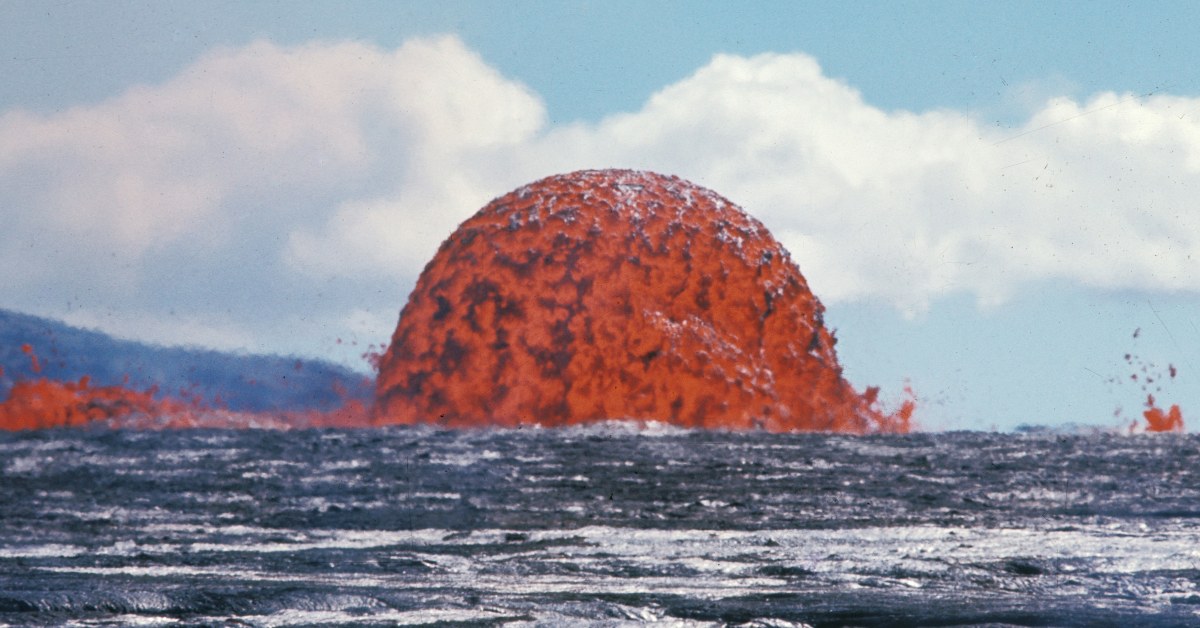
The Mauna Ulu eruption of Kilauea Volcano in Hawaii With lasted a whopping 1,774 days, that is, almost five years. At the time, it was Kilauea’s longest running eruption and produced about 460 million cubic yards of lava. Between 1969 to 1974, the public had a chance to view the astonishing eruption from observation platforms, getting a glimpse of incredible natural phenomena rarely seen during volcanic events.
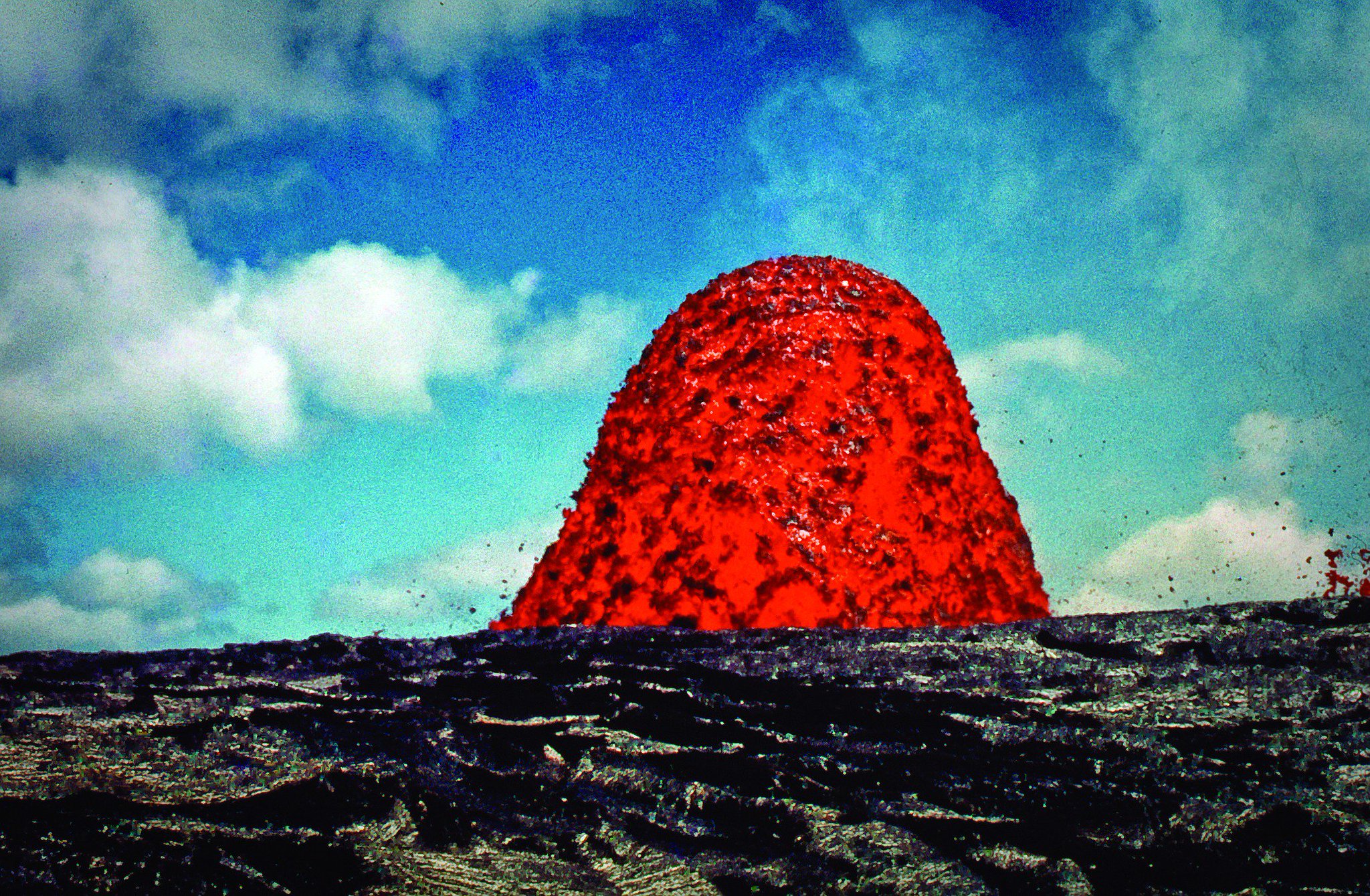
The US Geological Survey recently posted an image taken in 1969 by photographer J.B. Judd, which shows a rare symmetrical dome fountain. Measuring about 65 feet (20 meters) high, this unique lava dome was one of twelve fountaining events that occurred during the first year of the eruption. During these events, the outward spread of lava was so heavy that it spilled into the ocean 7.5 miles away.
Here’s a high res version of the rare image of the symmetrical lava dome (click to enlarge):
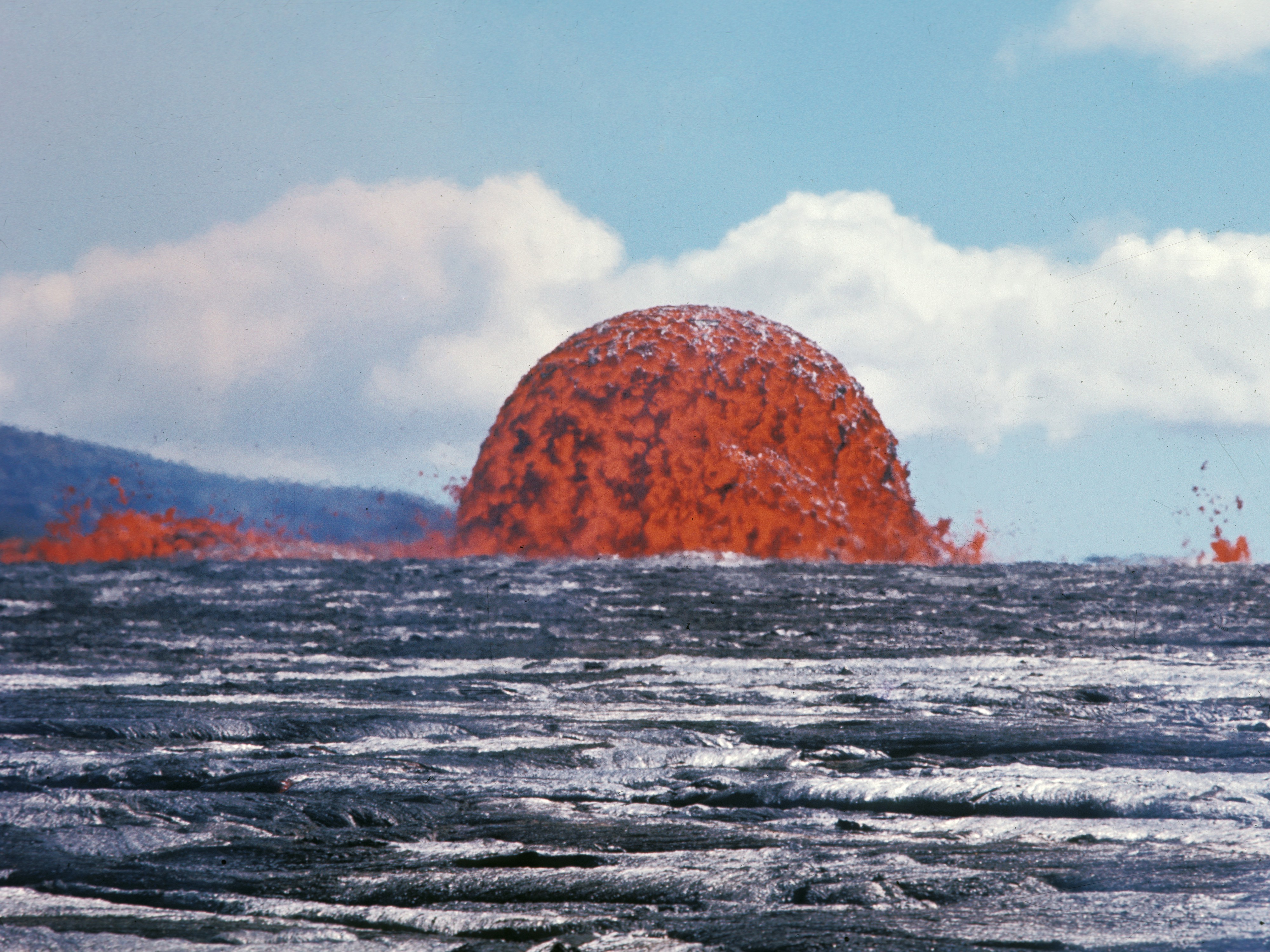
The exceptional lava fountain lasted for three days between October 10 to October 13, and may have reached as much as 245 feet in height. Seeing a glowing orb of lava like this is extremely rare – volcanic fountaining events are typically upward sprays of lava, like a geyser. Even though the photo gives the impression of a lava fountain springing up in the middle of water, the event actually occurred on land. The waves in the foreground are none else but ripples of lava!
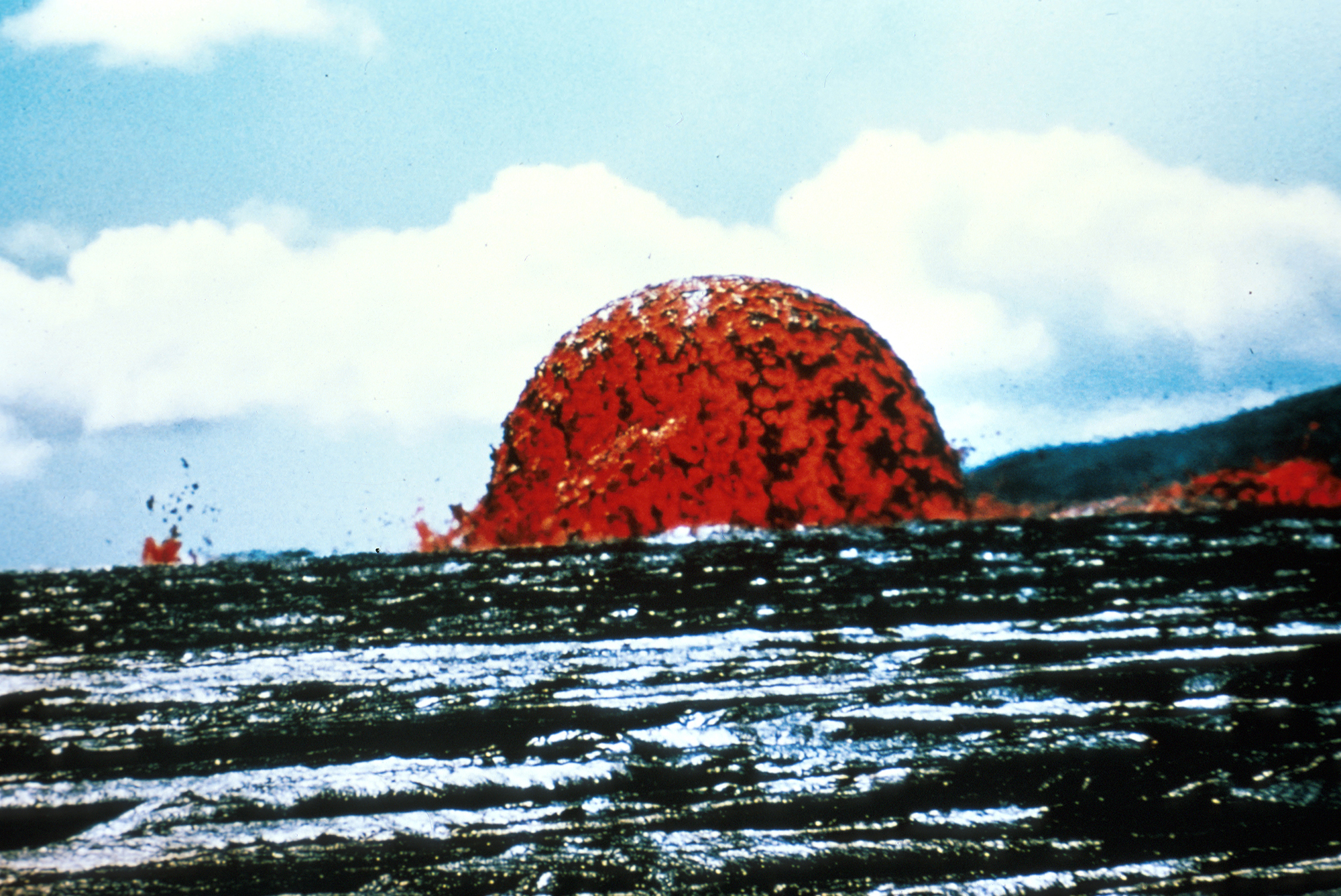
Lava fountains are formed by viscous (gooey) magma that piles up around the opening of a volcano, also known as the “vent.”
“Like lava flows, they typically do not have enough gas or pressure to erupt explosively, although they may sometimes be preceded or followed by explosive activity,” Oregon State explained in a blog post. “However, unlike lava flows, the lava that forms domes is often [too] thick and sticky to flow very far, and thus instead pile up thick and high around the vent.”
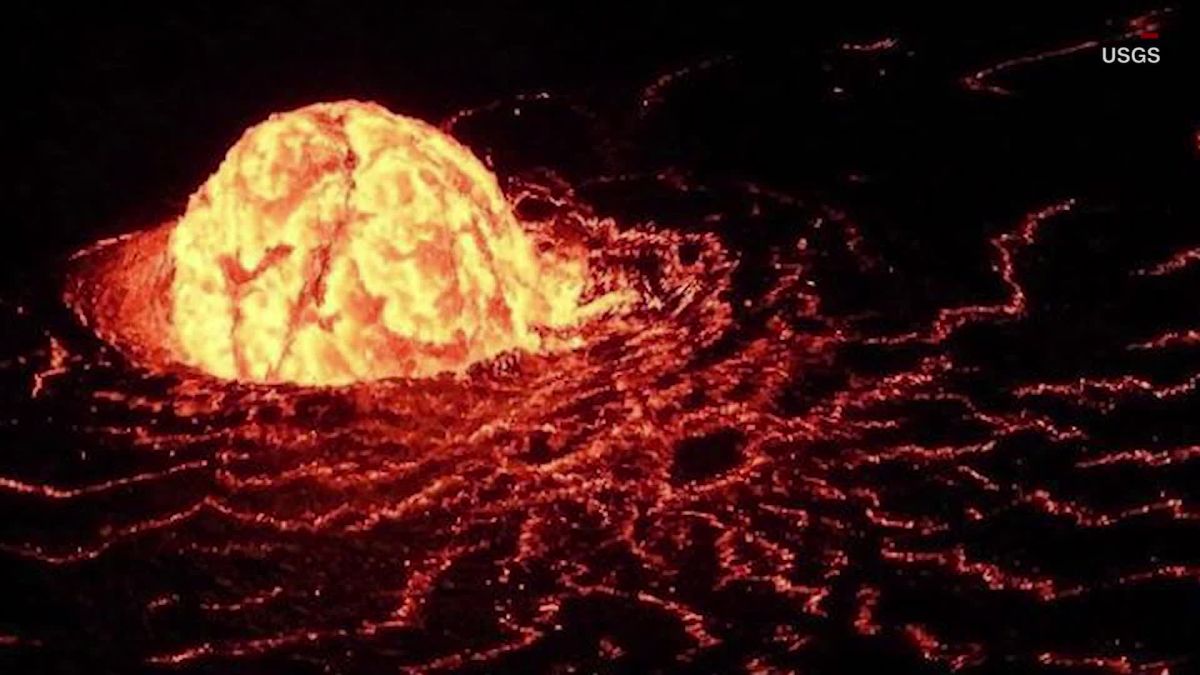
Though Mauna Ulu is no longer the longest running eruption – Pu‘u ‘Ō‘ō, which has been ongoing since 1983 wins that prize – it definitely gave us one of the most unique photographs ever taken of a lava dome – one that is perfectly symmetrical.
Here are two more fascinating photos from that particular eruption:
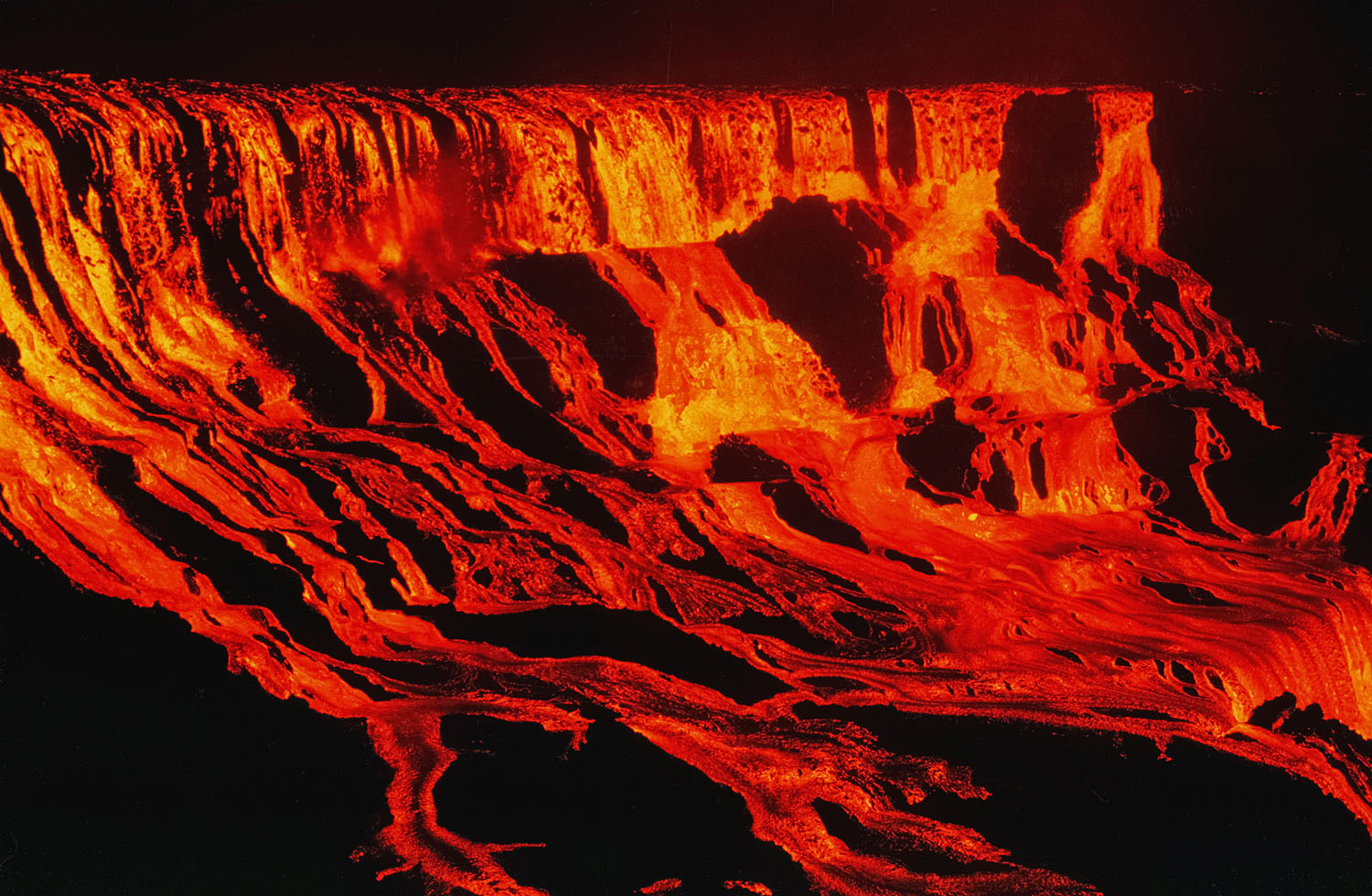 Lava falling higher than American Falls at Niagara begin to fill ‘Alae Crater on August 5, 1969. The total height of the lava falls was more than 330 feet, and the width more than 1000 ft. For the two seasoned observers who witnessed this awe-inspiring event, nothing else matched it during the entire Mauna Ulu eruption. Image credit: USGS
Lava falling higher than American Falls at Niagara begin to fill ‘Alae Crater on August 5, 1969. The total height of the lava falls was more than 330 feet, and the width more than 1000 ft. For the two seasoned observers who witnessed this awe-inspiring event, nothing else matched it during the entire Mauna Ulu eruption. Image credit: USGS
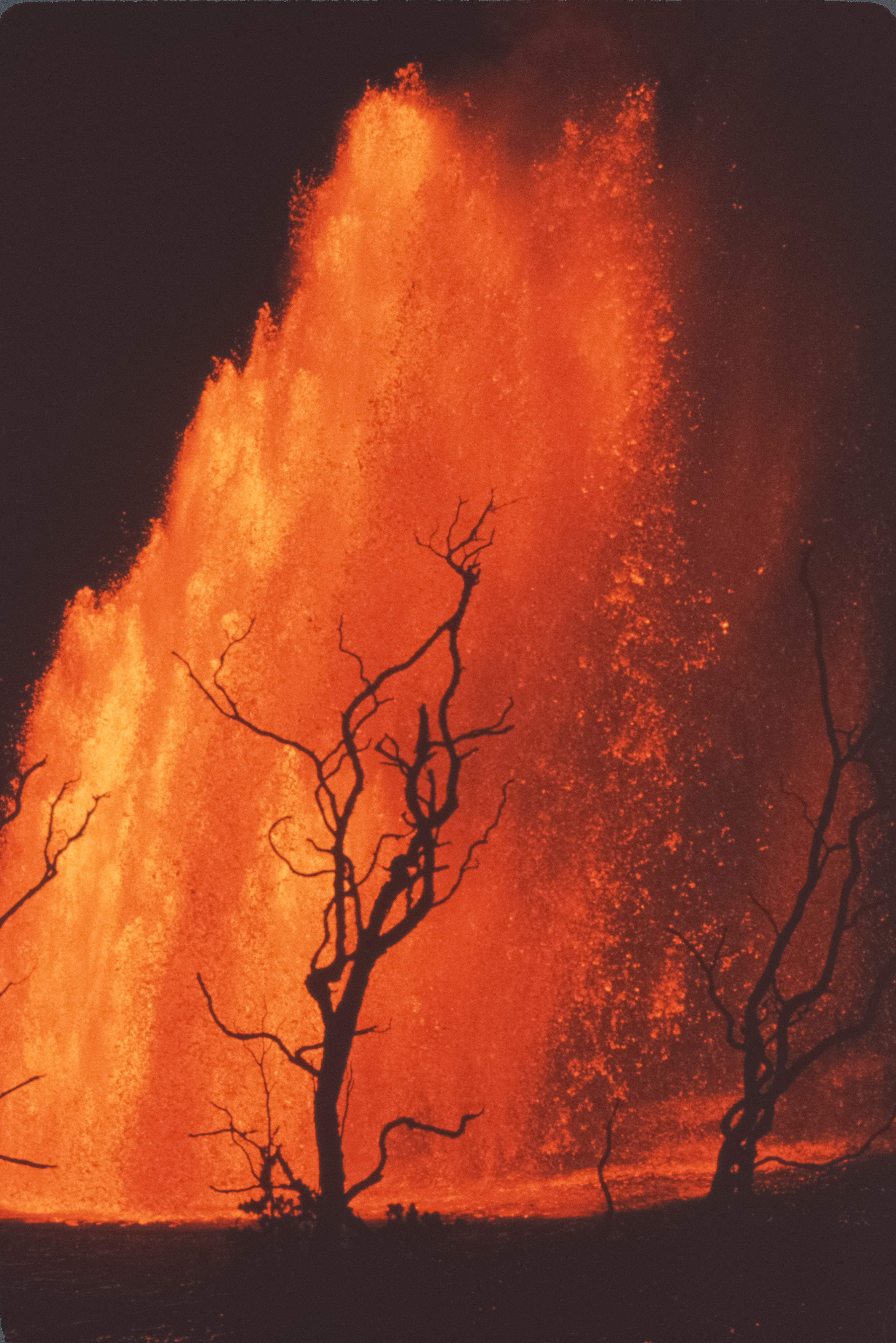 Tallest fountain of the eruption (1770 feet) on September 6, 1969.
Tallest fountain of the eruption (1770 feet) on September 6, 1969.
Wow, that eruption was unique indeed.
